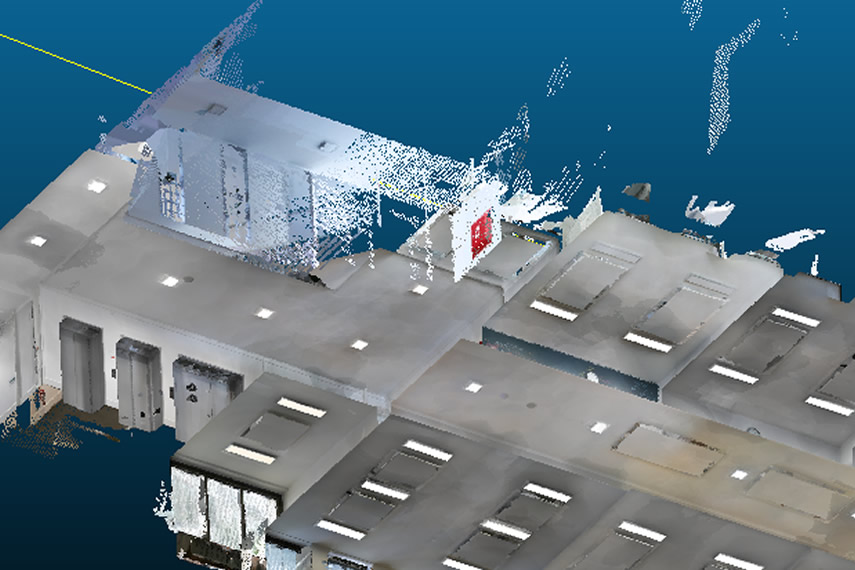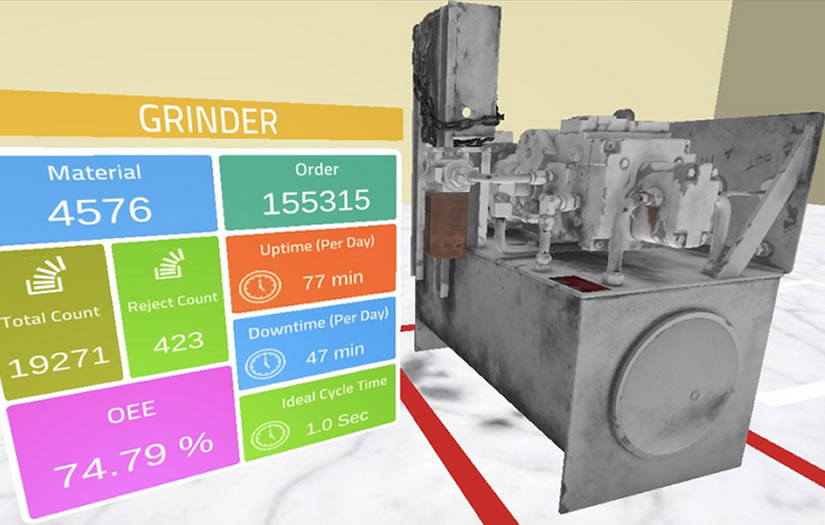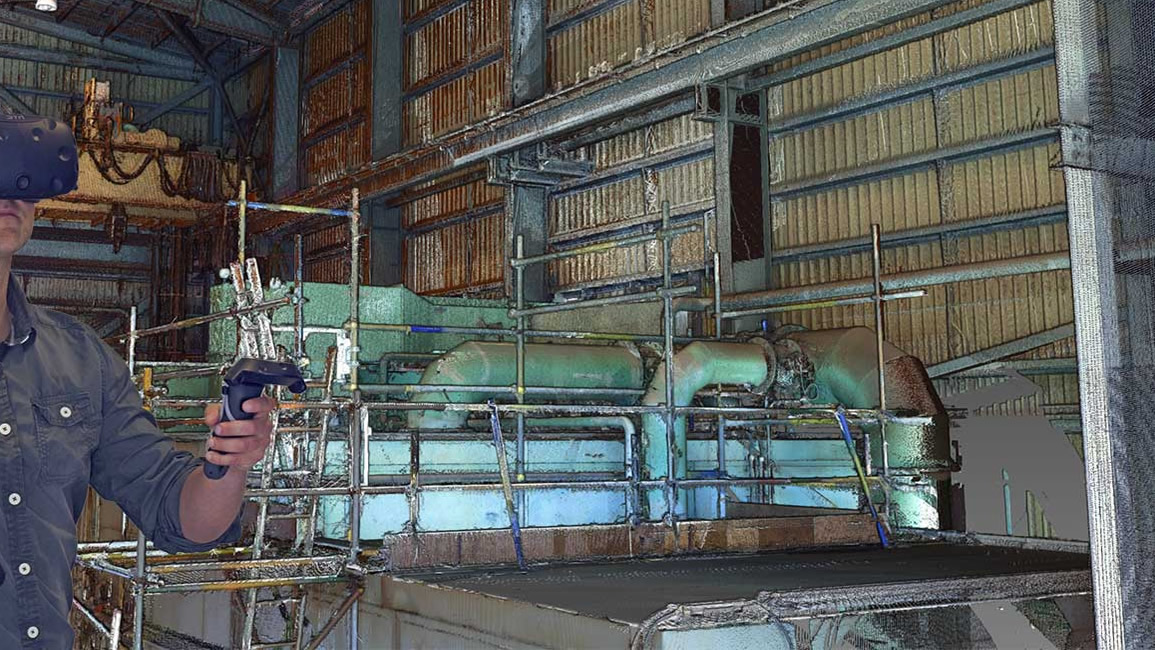Virtual reality for Manufacturing 4.0
Appville Softwares devliers rugged Virtual Reality apps for the manufacturing sector equipment maintenance, and engineering repairs. The field worker can get trained on operating or troubleshooting of the machine and process even before working on live machine. This phenomenally reduces the training time for the field officer. Also, avoids costly mistakes on field when operating with expensive machinaries.

Virtual Reality for Point cloud applications
Augmented Reality, unlike Virtual reality, is a technology that augments or enhances all sensor-based inputs including sound, video, images and graphics onto the real-world scenario, captured using your camera, and presents a tangible and precise output of the virtual embedding.
Immersive Technology
Virtual reality, an immersive technology, is an epitome of visualization and takes the user experience to a whole new level. The product as well as the process can be visualized by the user virtually using a head mounted devices with no distractions. The user can view the machines and factories virtually. The VR headsets also becoming cheaper everyday and more importantly, the initial setting up of the device is becoming much easier (eg: Oculus GO and Oculus Quest) thanks to the advancement in machine learning, image processing and high perfomant edge device processors.
Benefits of Virtual reality
Benefits of VR includes but not limited to
- Rich user experience
- Understand the machines and process even before it is made
- Interacting with the virtual elements
- Quicken the training process
- Visualize a real machine in real time remotely with a virtual copy
What is point cloud and where is it used?
To replicate a machine or a complete factory in VR, 3d model of that machine or the factory is required to create the VR experience for the user. However, models are not readliy availble with most of the owners. The owner may have 2d drawings with them but converting the model to 3d is a tedious and time-consuming process. To overcome this problem, LIDAR based tools are available to scan a machine or component and generate a point cloud respresenting the scanned object. High end scanners are also available to scan the entire factory and create a point cloud of the entire area.
These raw point clouds canot be used directly on VR app. These raw points should be converted into 3d model mesh before it is used in the VR app. Several 3d tools are available to convert the point cloud to mesh. A skilled 3d designer can create precise representation of point cloud as a 3d model. This model can then the utilized in VR developement (also be utilized in AR)
What is haptic sensor and where is it used?
After successful modeling of the factory or machine, the model can be brought into the VR space for visualization. The user can move around and see model in details but in order experience the touch and feel of the product, it is imperative that ‘Haptic’ sensor be used. Haptic sensor basically a special gloves worn on hands that can simulate pressure,, moisture etc., When this sensor works in synchronization with VR app, the user can see as well as feel the machine and the gap between the reality and the virtual reality is marginalized to almost nothing.

Virtual Reality for Point cloud applications
Where can we use Virtual reality
Among the various options of VR application zones, including education, training, construction, entertainment, one of the promising and upcoming sector that would benefit exceedingly from the technology is the Manufacturing sector.
- Integrating the different streams of manufacturing right from incoming raw-material upto the finished goods has been evident in the sector through the past decades with the evolution of inventory control through MRP to ERP and Cloud-ERP techniques.
- The seamless integration of the virtual data with the real data aids in phenomenal cost and time reduction.
VR for Manufacturing 4.0
The VR can be leveraged by the factory owner to visualize the entire factory for a manager/owner to see the overall performance of each production line virtually from anywhere in the world. The owner can also drill down to understand the details of each machine and view the performance, if needed. All this can be done by staying in his/her own premises.
Biggest advantage is that the values displayed in VR, the values will be displayed based on the user. The user will see what he/she wants to see. The data will be shown from main-man to layman and the information that will be displayed for each will be relevant to his job. This will greatly reduce the time to seek the right information.
VFuture of VR in Factory 4.0
Future of the VR technology is going to be even more interesting where in which the entire factory with all its machinaries, processes, buildings and components can be built virtually even before it is manufactured. The program to run the machine can also be loaded to the machine and simulated and used for production virtually. The virtual replication can throw invluable insights on the production and manufacturing at a much early stage. This will help both the mechanical, programming and electrical team to work together and solve the issues in the virtual system itself and thus avoiding costly mistakes in the real plant. Hence, speeding up the process of building the right system and this will save an enormous cost and time for the management. This technology is going to be a game changer.
Next Steps
Though the potentional of the VR, AR are huge and is going to revolutionize the manufacturing sector in a way never seen before, we can only move one step at a time. To begin with, choosing a simple use case where AR or VR can be effectively used and where Return-on-Investment (ROI) can be realized quickly. Once implemented rightly, this implementation will give a moral confidence to venture out deeper into this phenomenal technology and eventually implement virtual factory which could be industry 5.0!!!

Virtual Reality for Point cloud applications

Few More thing you should know
What is a VR box?
Virtual reality (VR) platform used with a head mount for a smartphone. VR BOX is Google Cardboard adoption of plastic body HMD in which you can place your Android or iOS smartphone to enjoy virtual reality games, app, 3D videos, 360 immersive 3d videos etc.
What are the main VR headsets avialable in the market?
Oculus Quest , HTC Vive, Sony, Nintendo , Lenovo
What is a haptic sensor?
Haptic technology, also known as kinaesthetic communication or 3D touch, refers to any technology that can create an experience of touch by applying forces, vibrations, or motions to the user. Haptic devices may incorporate tactile sensors that measure forces exerted by the user on the interface.
